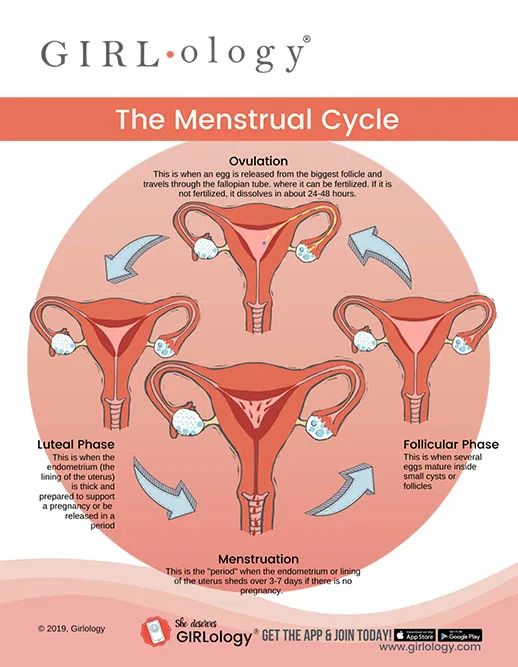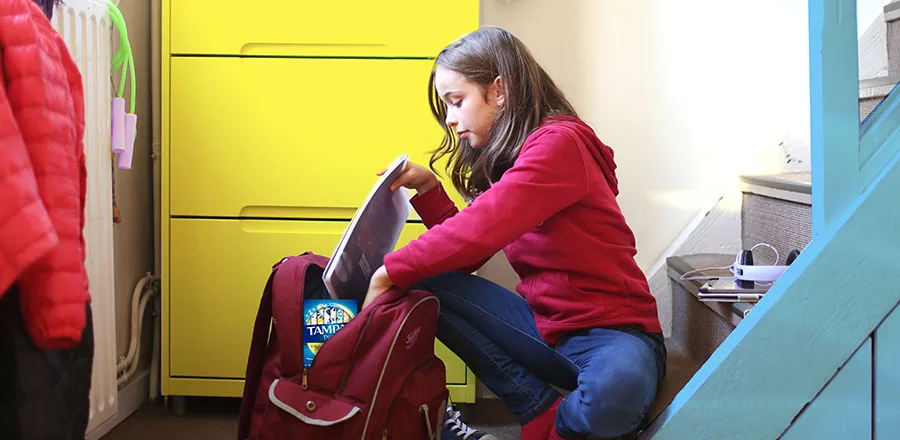The Facts on Menstrual Cycle Phases


By: Dr. Melisa Holmes, OB-GYN, & Founder, Girlology
The menstrual cycle is a mystery to a lot of people, but it shouldn’t be! Half of the earth’s population has a menstrual cycle and without it, the human species wouldn’t even exist! Obviously, it’s common, normal, and important, so shouldn’t women and everyone else understand it? We think so. Let’s break it down.
The purpose of the menstrual cycle (yes, there is a purpose for the monthly bleed) is to prepare the uterus for pregnancy. Under the influence of hormones, mostly estrogen and progesterone, the menstrual cycle is a series of changes that the uterus and other female reproductive organs go through about once a month.
If a pregnancy occurs, the menstrual cycle stops cycling. When there’s no pregnancy (which is most of the time), the menstrual cycle repeats itself over and over again from puberty (starting anywhere from age 9-16) through menopause (which is when periods naturally stop usually somewhere around age 50).
The Four Phases of the Menstrual Cycle
There’s a lot of science and anatomy involved in the menstrual cycle (bodies are pretty cool) and explaining the menstrual cycle can be complicated, but it’s easier if we break it into FOUR PHASES:
Follicular Phase
On the first day of a period, a “new” cycle begins as a hormone called Follicle Stimulating Hormone (FSH) starts to rise. FSH tells the ovaries to get some eggs ready to release. This is called the follicular phase because the eggs grow inside follicles (which are small fluid filled cysts), and the follicles release the hormone estrogen in this phase. Estrogen causes the endometrium to get thicker and fluffier so it will be nice and cozy for a fertilized egg if one comes its way.
The follicular phase lasts from the first day of a period to ovulation, and that takes anywhere from 1-3 weeks in normal cycles. It’s the most unpredictable and variable phase of the menstrual cycle.
Ovulation
When an egg is released from the ovary, it is called ovulation. The changing estrogen levels from the follicular phase cause another hormone called leutenizing hormone (LH) to rise quickly. The surge in LH triggers one of the follicles (usually the largest) to pop open and release its egg, which heads into the fallopian tube and starts its journey toward the uterus. If the egg is fertilized that means a possible pregnancy. It is your body’s way of prepping for a possible pregnancy If the egg is not fertilized, it dissolves in about 2 days.
Most women can’t feel exactly when they ovulate, but some may notice mild cramping for about a day or two (that’s called mittelschmerz). It’s also normal for vaginal discharge to look more clear and stretchy for a few days around the time of ovulation.
Luteal Phase
After ovulation, the follicle the egg grew in (called a corpus luteum) continues to produce another hormone called progesterone. Progesterone keeps the endometrium healthy and is required to support the growth of a pregnancy. But if there is no pregnancy, the corpus luteum stops producing progesterone, and the falling progesterone levels cause the entire lining of the uterus to shed so it can start over again with a new cycle, preparing for another egg.
The coolest thing about the luteal phase is that it is almost always the same length of 14-15 days in all cycles and for all women with periods. That means if you could precisely predict your next period (where’s that crystal ball?) and count backwards two weeks, you would know when you ovulate!"
Menstruation
Menstruation or the menstrual period is the period of time that the endometrial lining is released (that’s why we call it a period). Periods normally last 3-7 days as the endometrium plus blood and fluids are slowly released. Once the period begins, guess what? The cycle of hormones starts all over with the follicular phase, preparing another egg and the endometrium.
Want a quick review?
Some eggs mature. One egg ovulates. The egg travels through the fallopian tube into the uterus. If there’s not a pregnancy, the uterus sheds its lining as a period, and the cycle starts over. There you have it – that's the menstrual cycle. Sometimes an illustration can help!





